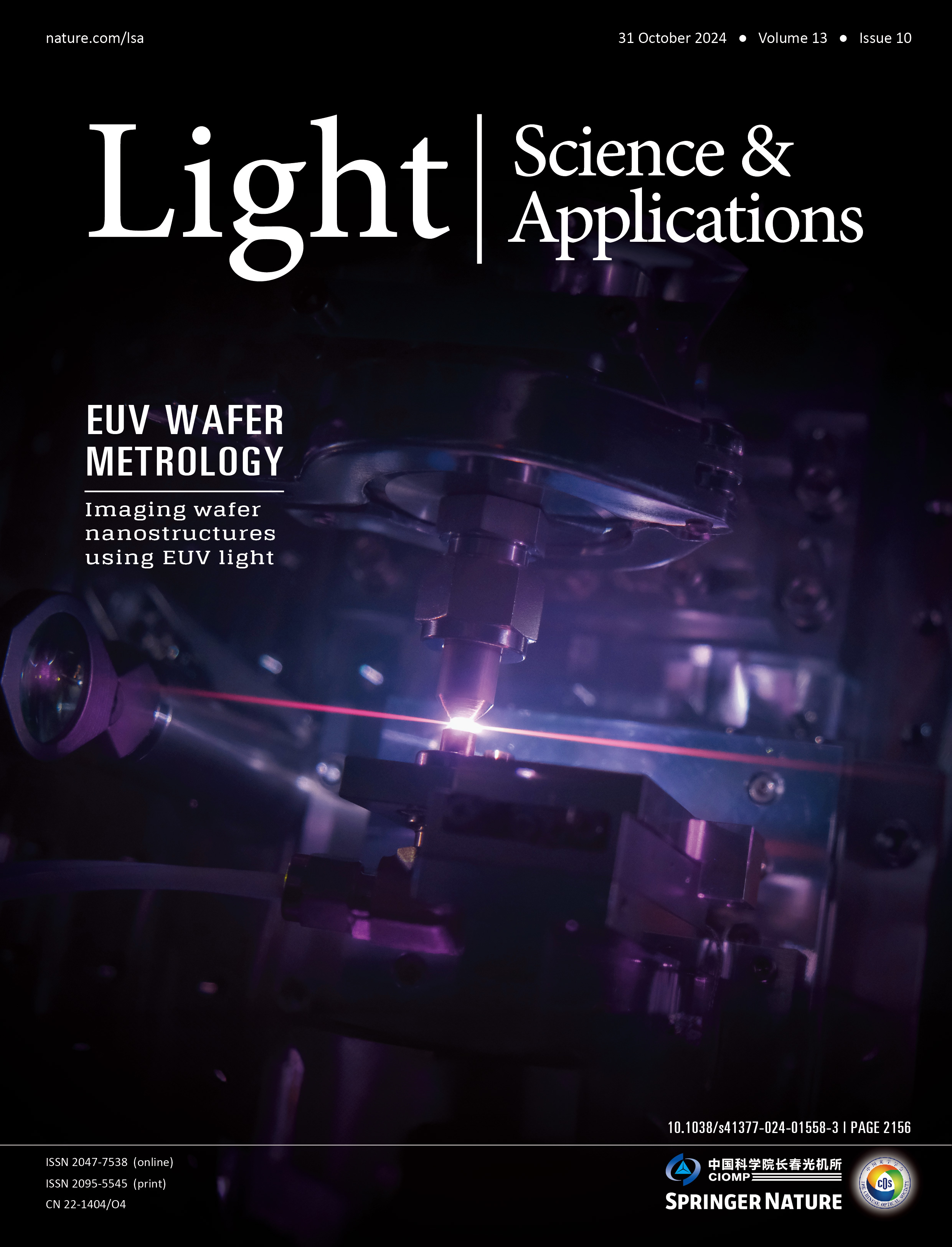Cover article Nature Light: Science & Applications | Computational Imaging for EUV wafer metrology
The paper on EUV wafer metrology using computational imaging method “ptychography” has been selected by Nature Light: Science & Applications as the cover article for the next issue to be published on 31 October.
The cover picture is a photo of the high-harmonic generation (HHG) process in the compact tabletop EUV source. In this photo, the researchers look into the HHG vacuum vessel from a window on the top. The drive IR pulse laser (propagating from left to right) is focused on a pressurized Argon gas jet between a gas nozzle and a gas catcher (placed along the vertical direction).
The bright white plasma generates higher harmonics in the 10-20 nm wavelength range. The colourful glow and streak, shown as purple-pink by the camera, originate from the scattered IR light.
Abstract
Wavelength-multiplexed multi-mode EUV reflection ptychography based on automatic differentiation
Yifeng Shao, Sven Weerdenburg, Jacob Seifert, H. Paul Urbach, Allard P. Mosk & Wim Coene
Ptychographic extreme ultraviolet (EUV) diffractive imaging has emerged as a promising candidate for the next generationmetrology solutions in the semiconductor industry, as it can image wafer samples in reflection geometry at the nanoscale. This technique has surged attention recently, owing to the significant progress in high-harmonic generation (HHG) EUV sources and advancements in both hardware and software for computation. In this study, a novel algorithm is introduced and tested, which enables wavelength-multiplexed reconstruction that enhances the measurement throughput and introduces data diversity, allowing the accurate characterisation of sample structures. To tackle the inherent instabilities of the HHG source, a modal approach was adopted, which represents the cross-density function of the illumination by a series of mutually incoherent and independent spatial modes. The proposed algorithm was implemented on a mainstream machine learning platform, which leverages automatic differentiation to manage the drastic growth in model complexity and expedites the computation using GPU acceleration. By optimising over 200 million parameters, we demonstrate the algorithm's capacity to accommodate experimental uncertainties and achieve a resolution approaching the diffraction limit in reflection geometry. The reconstruction of wafer samples with 20-nm high patterned gold structures on a silicon substrate highlights our ability to handle complex physical interrelations involving a multitude of parameters. These results establish ptychography as an efficient and accurate metrology tool.
